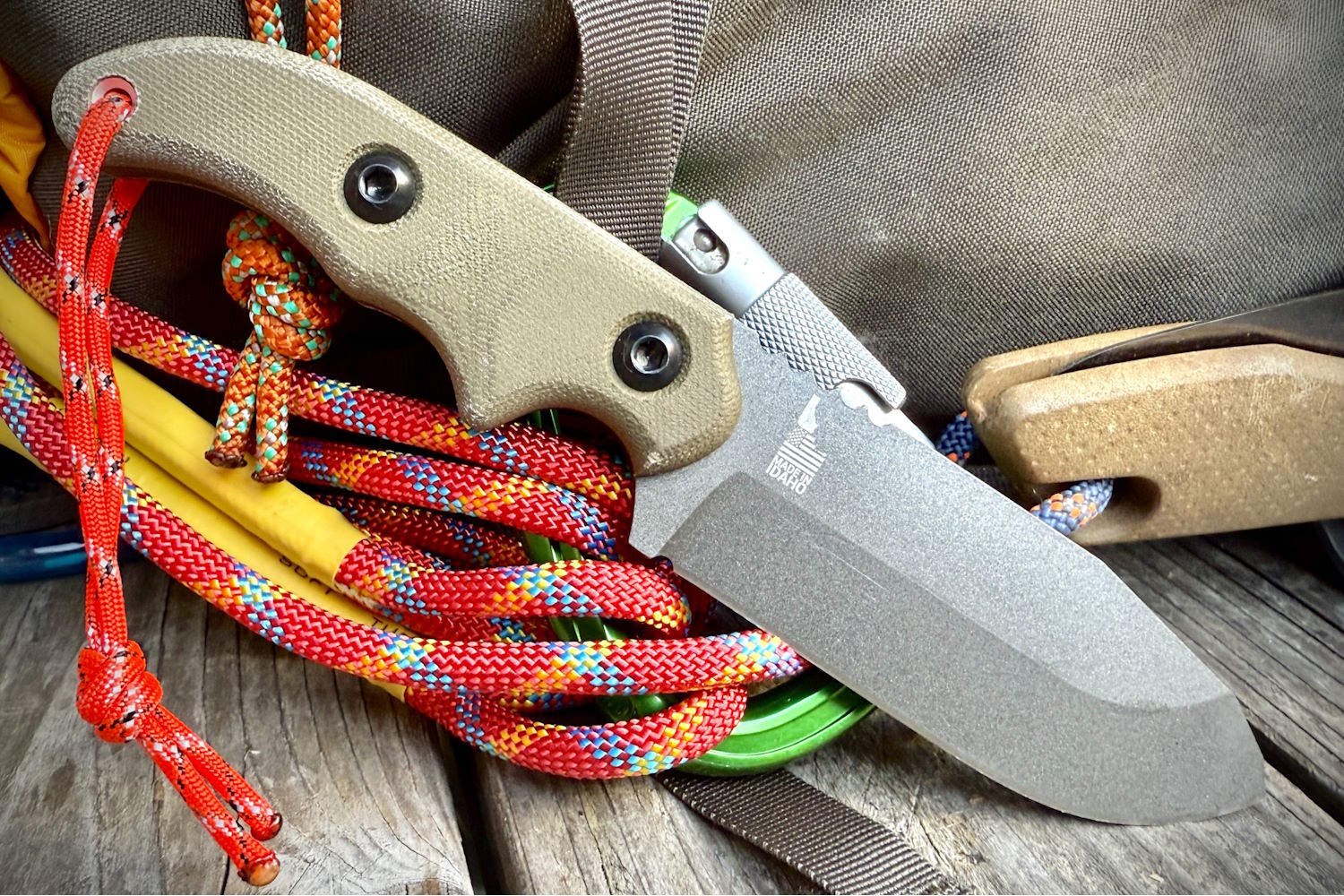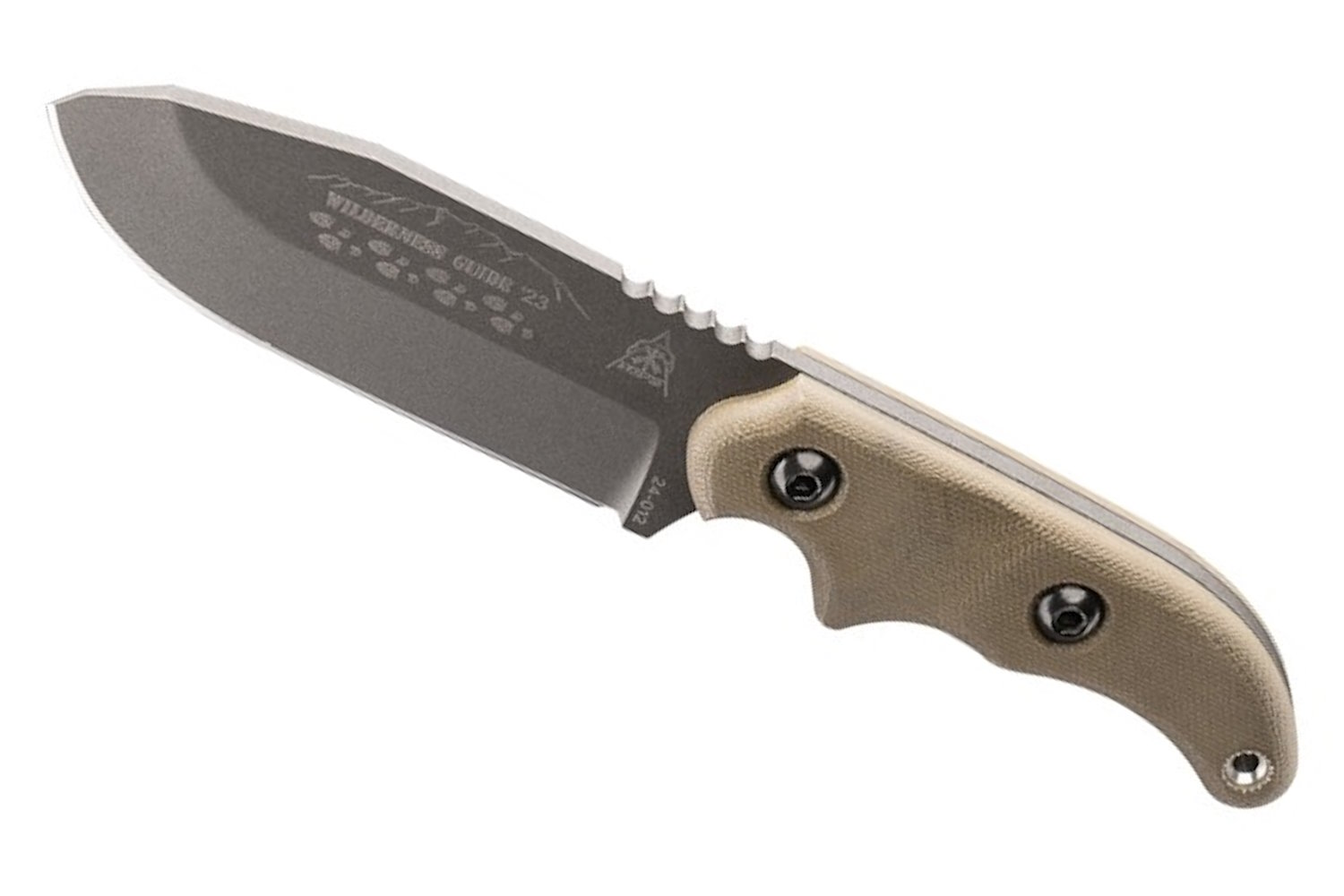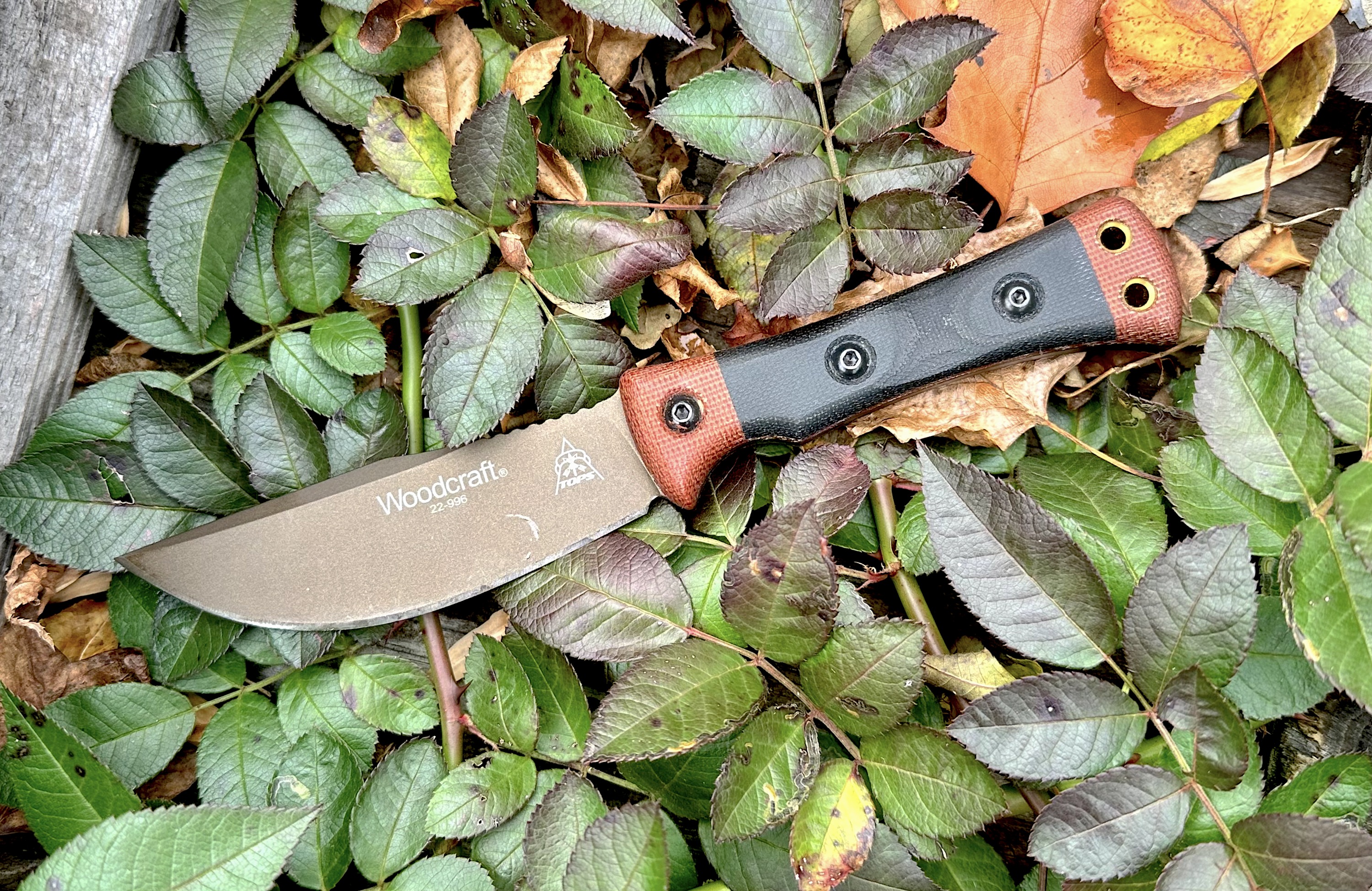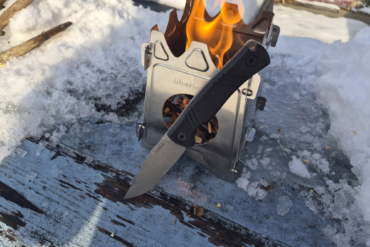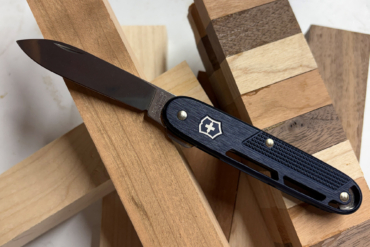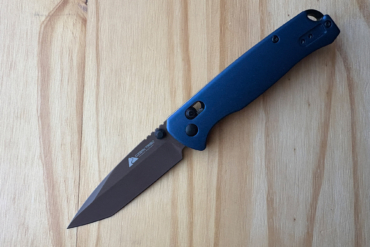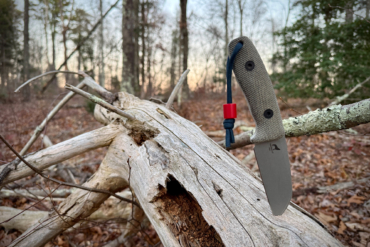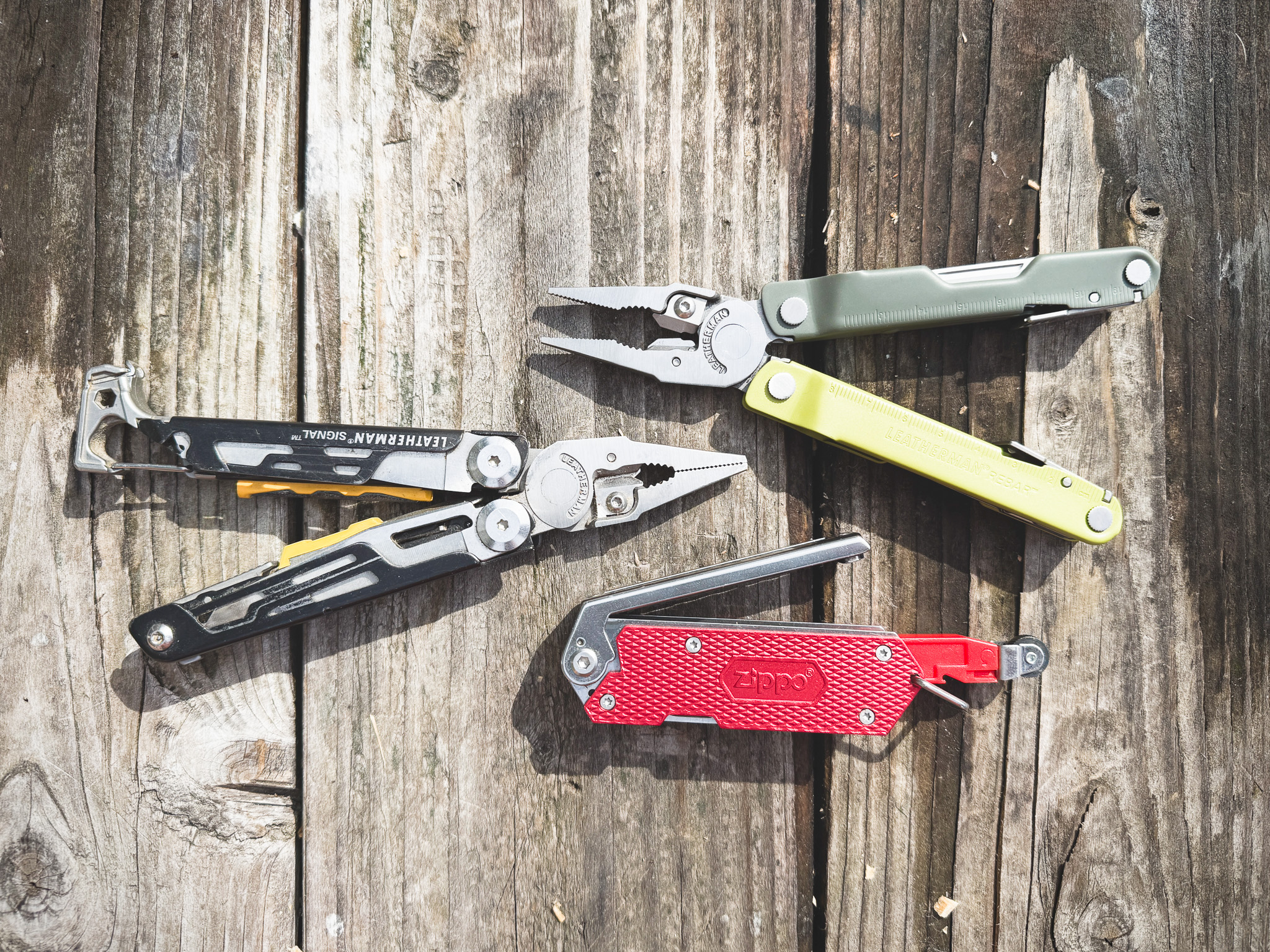Out of all the reviews I have written, this is one I don’t want to write. Why? After spending the last month using the TOPS Knives Wilderness Guide ‘23, I know there are more tales of adventure with it yet to come.
That’s because the TOPS Knives Wilderness Guide ‘23 is the best fixed-blade knife I have enjoyed using and abusing this year. It’s got everything you want in terms of form and function, and it’ll last multiple generations, even if you beat on it.
If the outdoors inspires you in the fall and winter to the point where you spend all of your free time out there, I want you to consider this knife above any other belt knife you have or were considering buying. The combination of form and function makes the WG ‘23 the pinnacle of versatility.
In short: The TOPS Knives Wilderness Guide ‘23 is the quintessential outdoor knife. It’s made from time-tested materials like 1095 steel and Micarta handle scales. Its compact yet stocky form makes it one of the most versatile knives of its kind on the market today. It does carry a high price tag, which aligns with this highly regarded brand.
Shopping around? Check out our guide to the best survival knives here.
- OAL: 8.78”
- Blade length: 4.38”
- Blade steel: Tungsten Cerakoted 1095
- Blade shape: Drop point
- Grind: Flat
- Hardness: 58-56 HRC
- Sheath: Kydex
- Carry: Right
- Weight: 9.6 oz.
- Carry weight: 12.3 oz.
- Price: $260
Pros
- Balance between form and function
- Size and thickness make it highly adaptable
- Tungsten Cerakote is very tough (the knife will never rust)
Cons
- Heavy
- Will not strike ferro rods due to Cerakote
- No left-hand carry
Design & Features
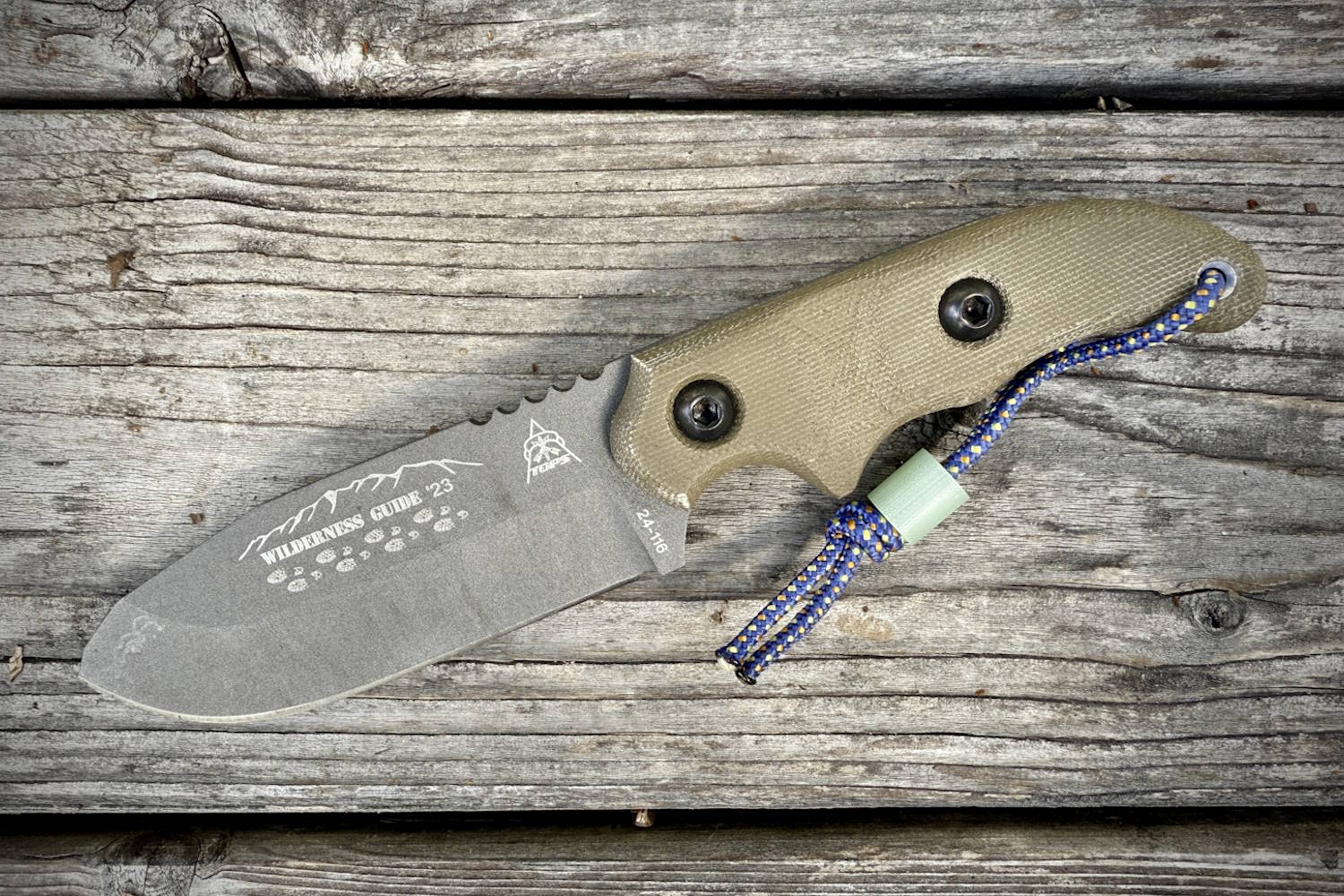
The Wilderness Guide ‘23 is a fantastic overall knife. I will not call it a survival knife or a bushcraft knife. Purists would argue that it’s a survival knife and not a bushcraft knife, but I would clap back with the fact that bushcraft knives are a little outdated and niche. I digress.
At just shy of 9 inches in total length and boasting a blade thickness of 3/16 inches, the Wilderness Guide ‘23 is short and stout. Its 1095 carbon steel blade is coated in Tungsten Cerakote, adding durability and reliability to its overall categorization.
However, it’s the overall shape — the 1½-inch tall blade that tapers down significantly in the handle while boasting an oversized choil — that earns the bulk of the accolades.
Even so, all of that attention needs to be shared with the unique bullnose drop-point blade design. It’s thick and unrefined, which aids in its ability to slice, chop, and (gasp) pry while toning down any indication that this knife is good for stabbing.
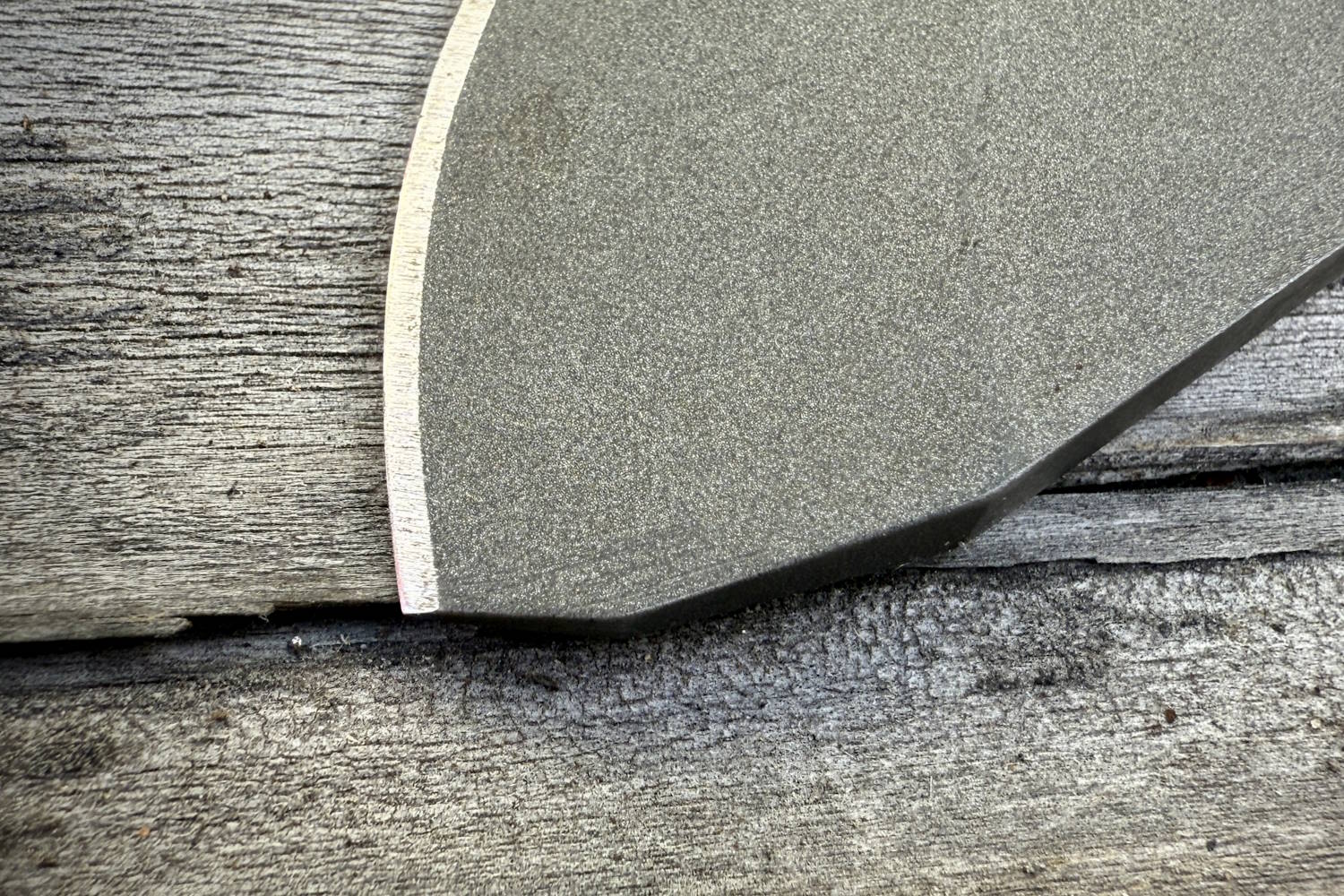
Rounding out the knife are its ample, shaped canvas Micarta handle scales. Micarta has become my knife handle material of choice. I blame it on the rain we had through spring and summer, as Micarta gets wicked grippy when wet. It also patinas better after a few adventures in the rain.
The kit rides along on your right hip or the small of your back (sorry, lefties) in an OD Green Kydex sheath. It has TOPS’ staple rotating spring steel belt clip. We’ll get into the pros and cons of that belt clip a little later, but I will say that I appreciate it here on the Wilderness Guide ‘23 more than I have on other TOPS knives.
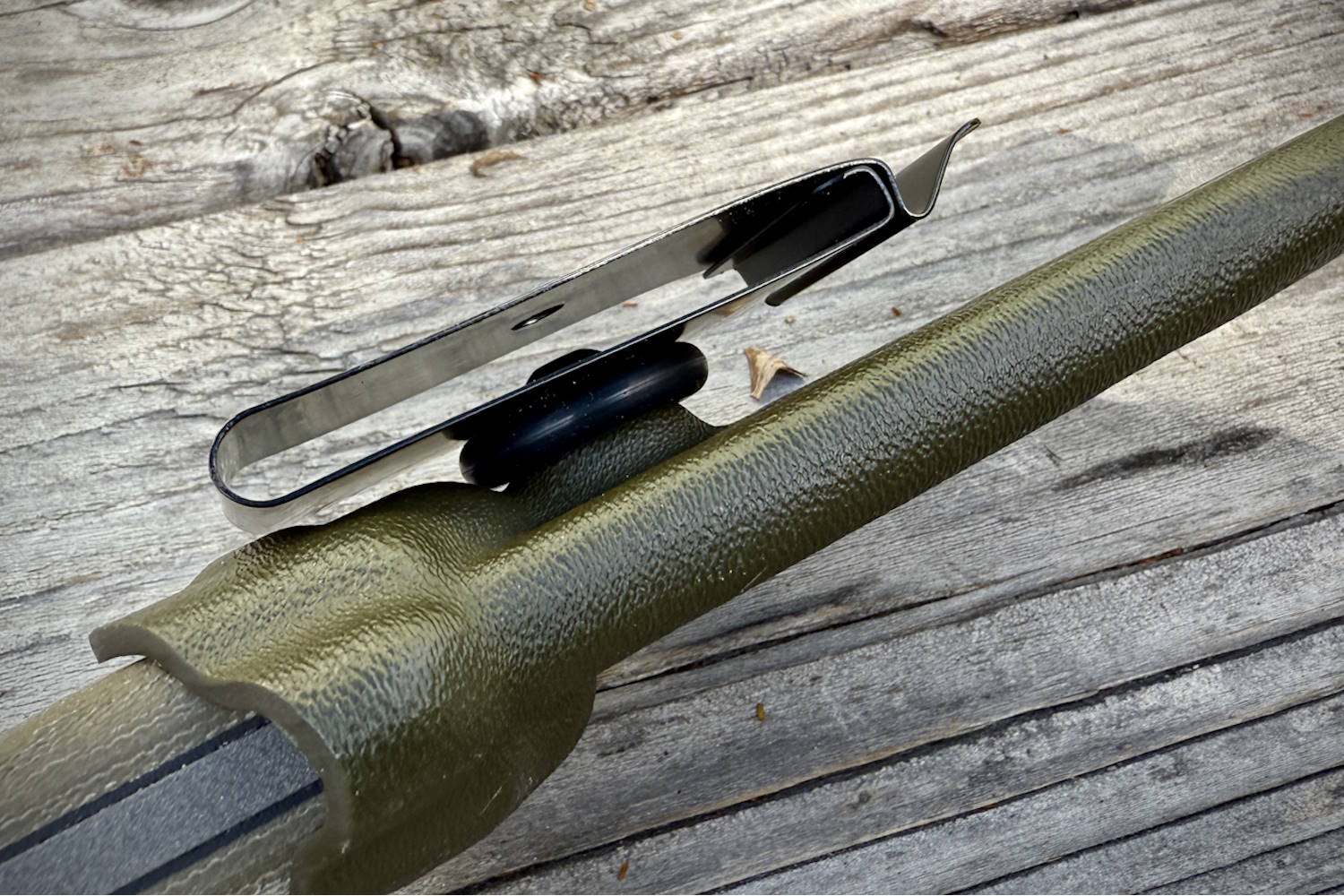
First Impressions
The colder months in New England are survival-oriented. I wanted a knife that would address the needs of the seasons and assumed the Wilderness Guide ‘23, a knife aimed at the wilderness, would. And man, was I right.
First and foremost, the compact size and unique blade and handle shapes of the knife naturally adapt it to many outdoor activities — whether you’re wearing gloves or not. It also makes for an incredible hand feel. My index finger sets nicely in the choil, allowing for my remaining three fingers to sit comfortably in the space before the handle down-turns to the butt. This positions my thumb onto the jimping, making the grip perfect.
Aside from the back tab of the choil being almost as tall as the blade (1.5 inches), the rest of the handle just breaks 1 inch. This is another grip-enhancing feature, but it also allows the blade to do a lot of work. I won’t call the Wilderness Guide ‘23 unbalanced, but it is blade-forward. This will help minimize fatigue.
In terms of carry, TOPS always does a great job with its Kydex sheaths, but I generally don’t like its spring steel belt clip. For one, it can only be worn on your right side or horizontally across the small of your back.
But, due to the way it’s mounted, it can’t easily be maintained. I’ve struggled with this in the past on other TOPS knives, but they’ve never failed on me. So, I have to learn to let go of that preconceived notion.
Wilderness Guide ‘23 vs. Wilderness Guide 4.0
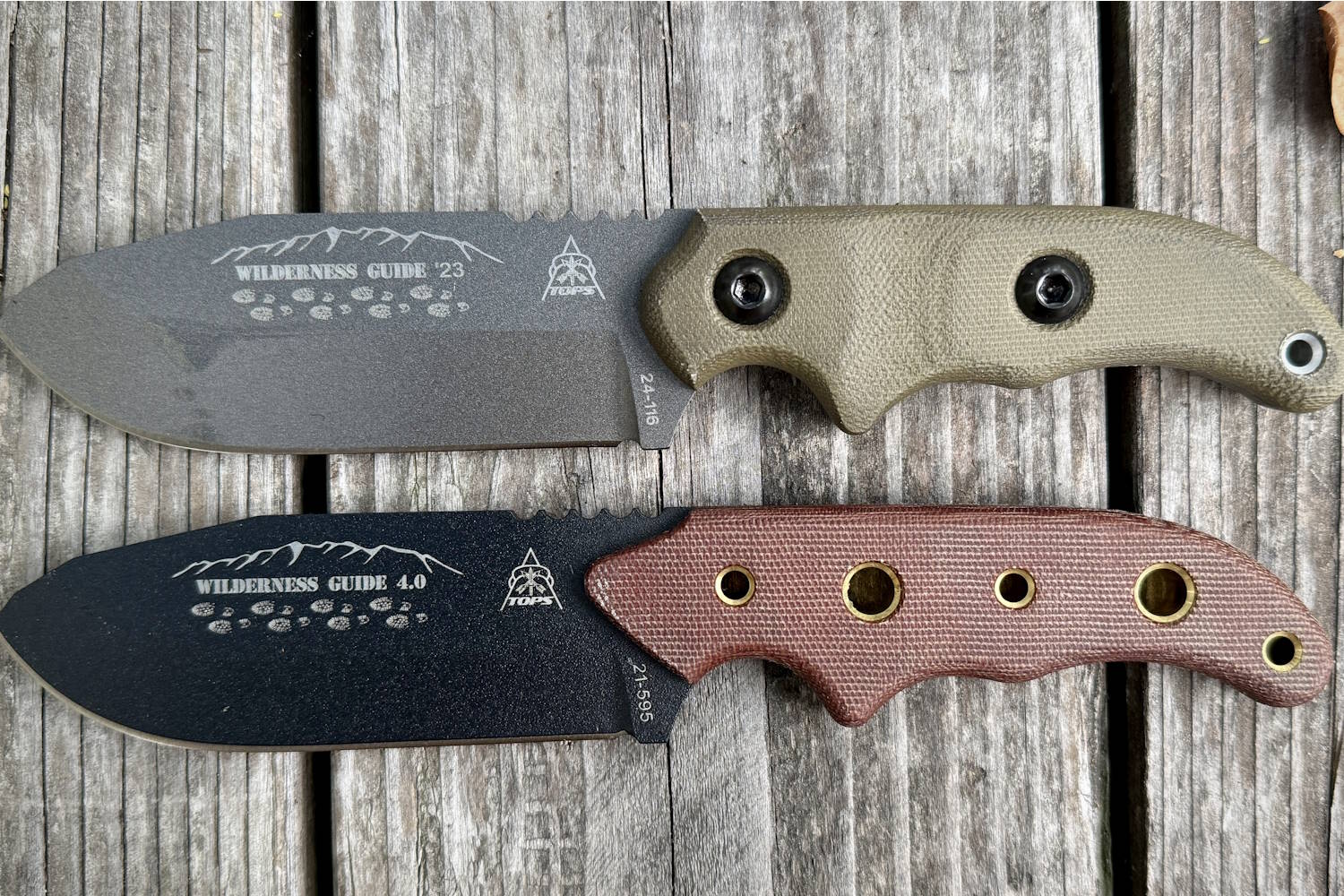
Both of these knives are available on the TOPS website and are similar but not identical. Though many may see the Wilderness Guide ‘23 as an updated version of the Wilderness Guide 4.0, it is a reimagining that improves the knife’s overall versatility. Though they share many similar qualities, I wouldn’t consider these two knives the same.
TOPS sent me a loaner of the Wilderness Guide 4.0 along with my sample of the Wilderness Guide ‘23. This allowed me to note the differences between the two. In terms of length and height, the knives are almost identical. However, the Wilderness Guide ‘23 is much thicker and, therefore, better adapted for more demanding tasks.
The knife’s description on the site doesn’t openly state that fact, but it really needs to. I was only expecting a couple of cosmetic differences, but it’s way more than that.
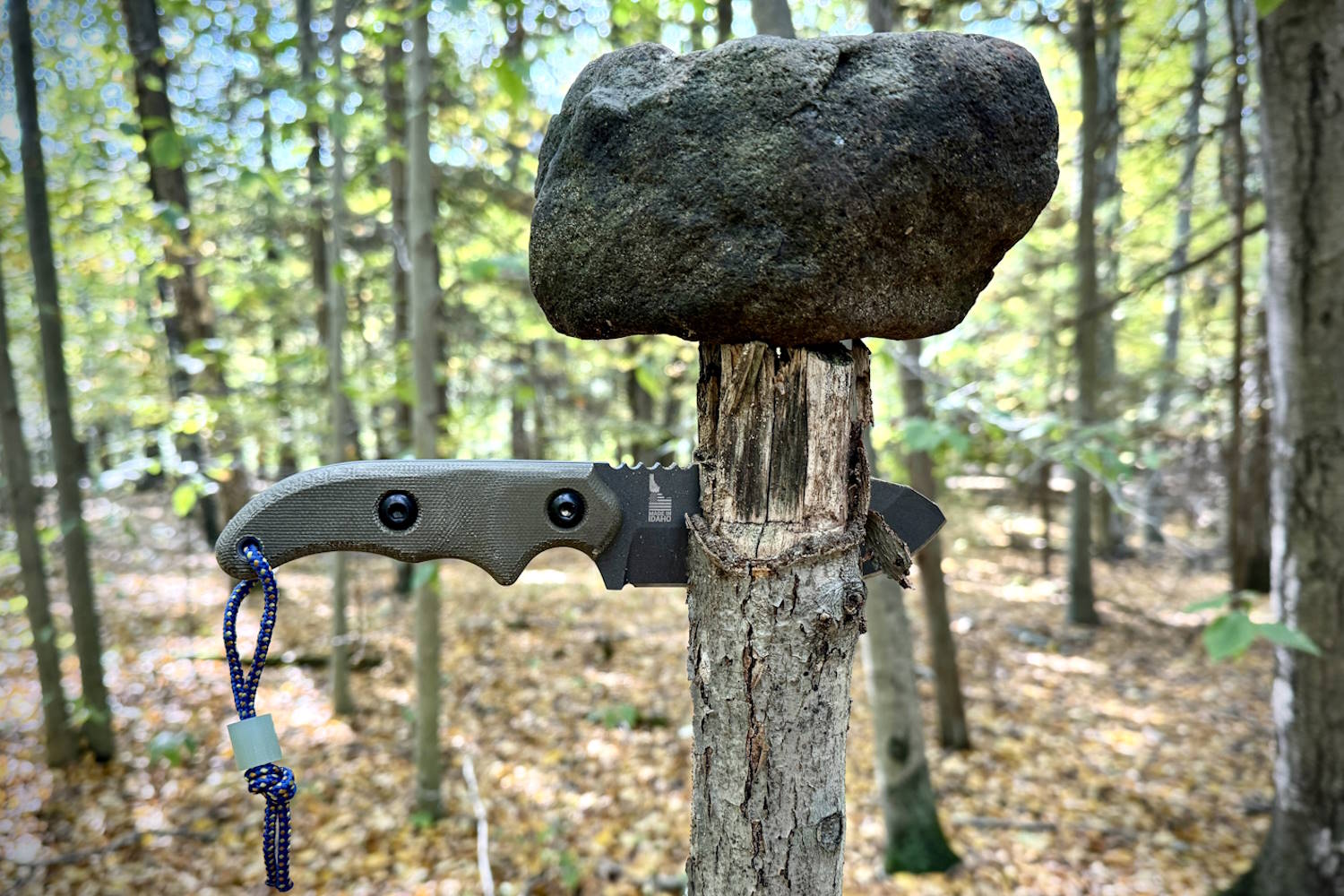
For example, if you like a thin-profile knife that could be tied to a stick and used as a spear (or do a decent job of cutting onions), go for the 4.0. If you want a bulkier knife for hand tasks, the Wilderness Guide ‘23 has your name written all over it. Also, the 4.0 comes with an unconventional sheath that I found to be more cumbersome. The trade-off is that it has a pocket to store smaller trinkets like a sharpening stone.
In the Field
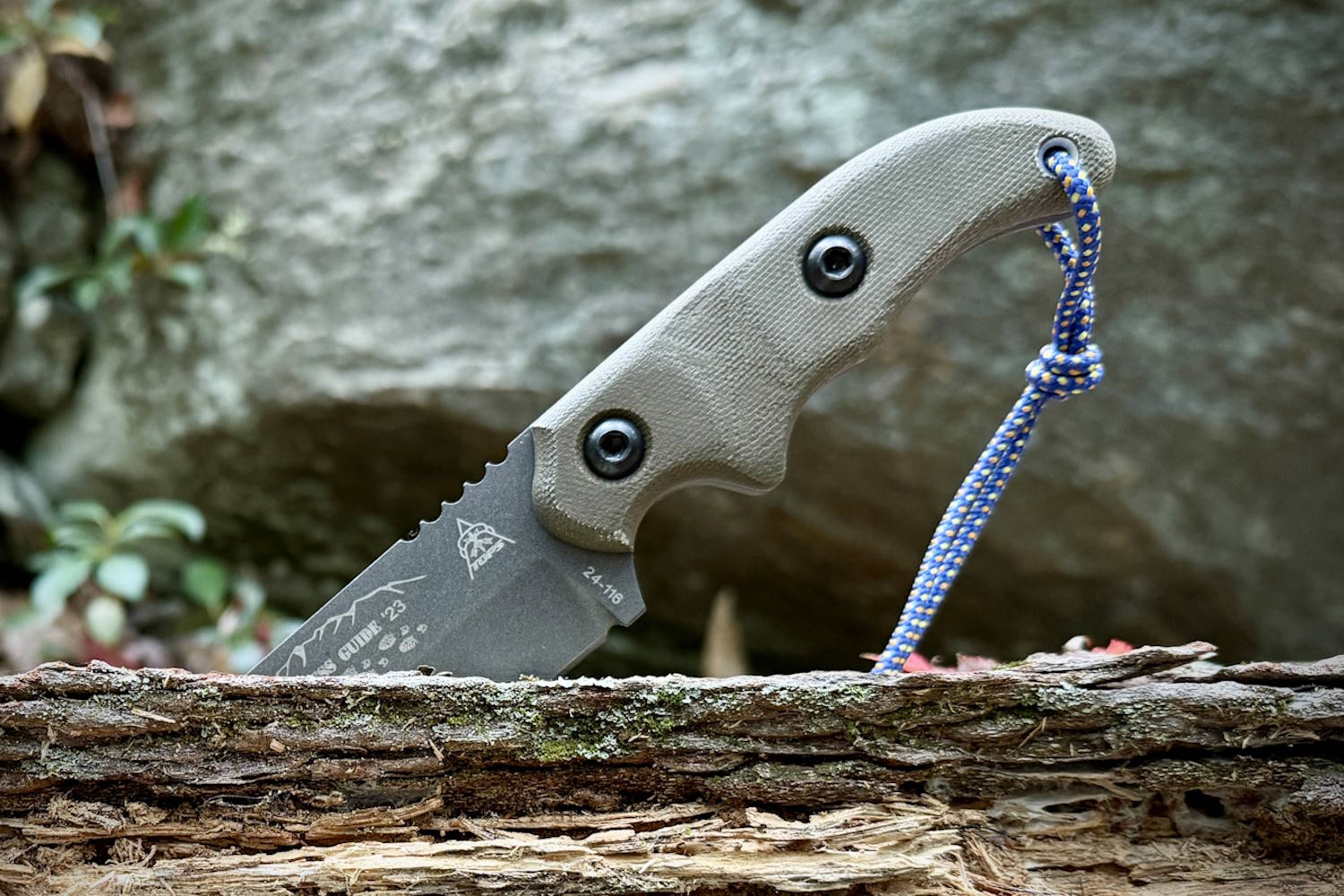
When I pitched the Wilderness Guide ‘23 to my editor, Sean McCoy, he wanted to ensure I was considerably abusive to the knife. With more desirable blade steels out there, he was conflicted about why TOPS would use 1095 — which they do a lot. He’s just as much a knife nerd as I am and knows his way, like I do, through the knife world via real-world experiences. So, I honored his wishes and gave the knife hell.
For a month, I used the Wilderness Guide ‘23 every day. I cut, chopped, pried, and sliced with it. In that, I found how great it was for prepping kindling — and I don’t mean just the little tinder bundles and feather sticks we all like to start fires with.
I am talking about the thick stuff you throw on the fire right before the bourbon and bullshitting starts. In the colder months, you must keep the fire going all night, or you will turn into a human popsicle. This is important.
It’s also important to note that I batoned the spine of the knife with a random oversized rock I found off the trail. There’s nothing but a picture to show of it. The Cerakote remains unmarred.
One Drawback: Not Ferro-Compatible
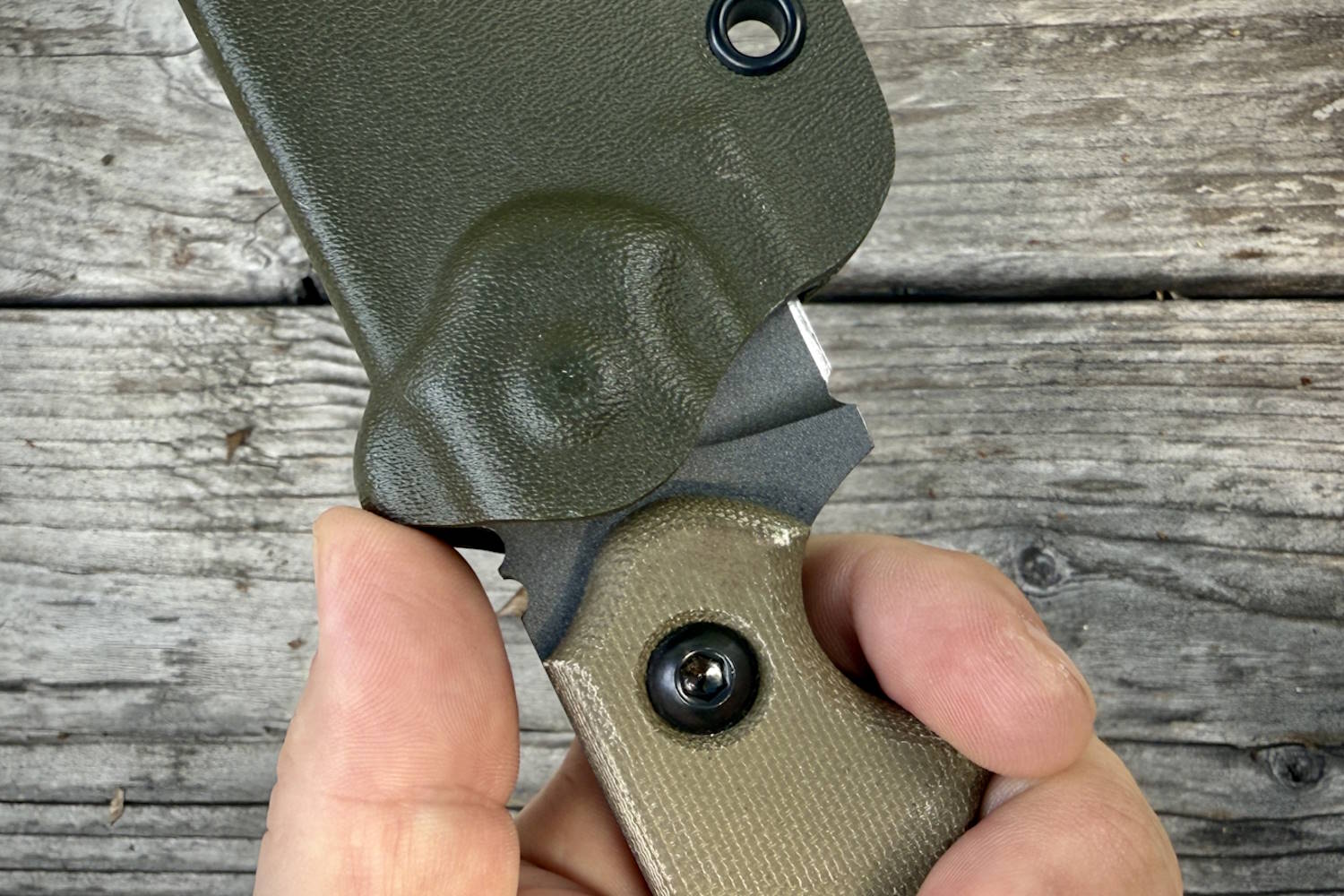
I would have liked to use the Wilderness Guide ‘23 with a ferro rod, making it slightly more versatile, but the Cerakote renders that impossible out of the box. That is far from being a deal breaker for me. I’ve got a handful of ways to start a fire. But it’s a very important note and may be a dealbreaker for many survivalists.
As far as carry goes, I found an appreciation for the rotating belt clip — and it was in its ability to rotate. The clip is easy to remove from your belt, but having the ability to rotate the knife and sheath instead of removing it entirely is much more practical. Additionally, TOPS molded a thumb ramp into the Kydex to help pop the knife out of the sheath easily without sacrificing how well it holds the knife in place when being carried.
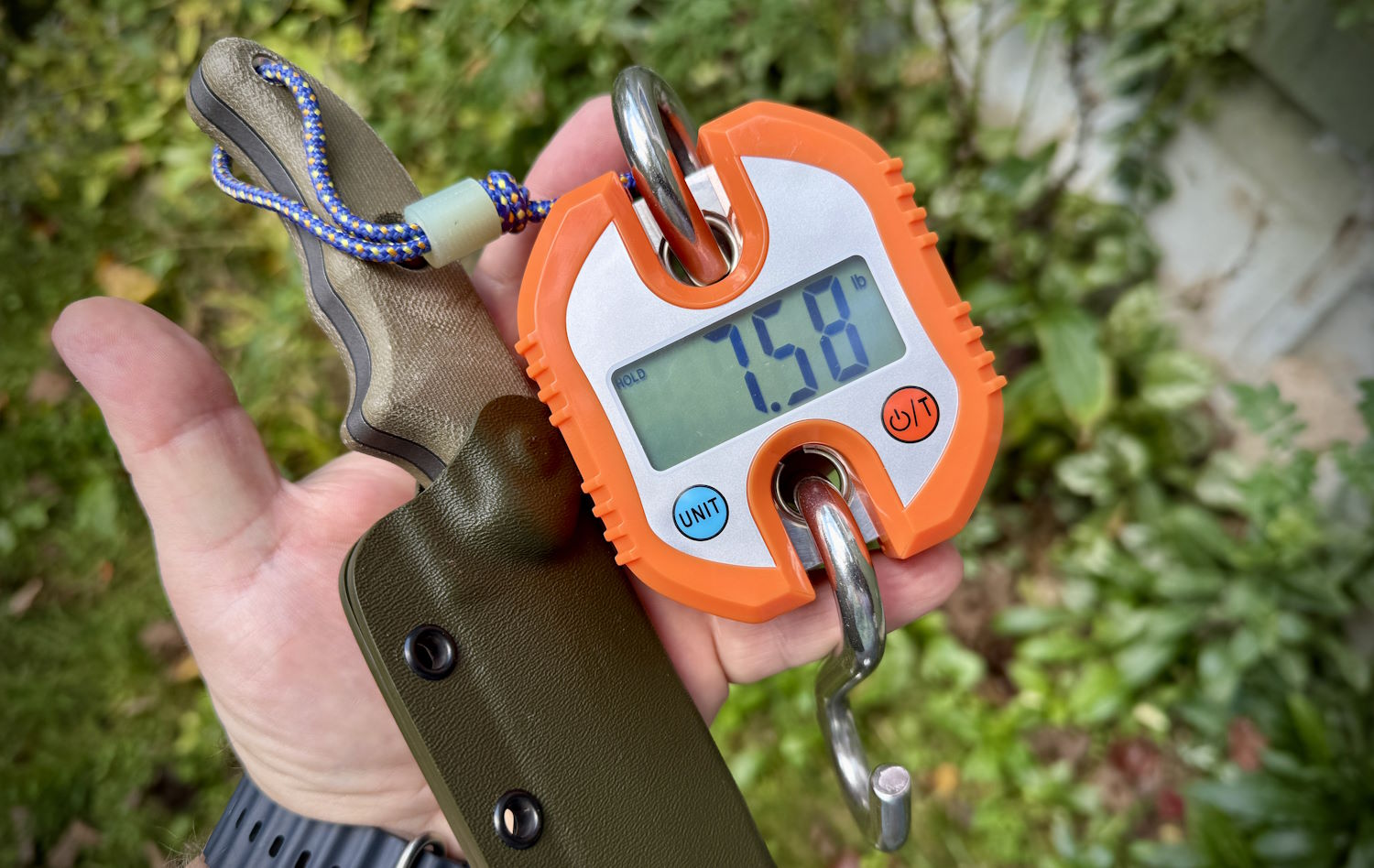
For the record, it takes more than 7 pounds of pull to get the knife to pull out of the sheath when it’s hung upside down. If you ever get into a fight with a grizzly and it flips you over to shake all the goodies out of your pockets, that knife will still be there when you’re ready to make your move.
In Conclusion

As I stated in the introduction of this review, the TOPS Knives Wilderness Guide ‘23 is the best fixed blade I have had the pleasure of using and abusing this year. In my mind, this is not simply another update of the Wilderness Guide series. Instead, this knife is reimagined by the original designer (and TOPS Knives President) Leo Espinoza, inspired by experience and user feedback.
If you already own the Wilderness Guide 4.0, there’s no need to drop another $260 for the Wilderness Guide ‘23. However, if you’re on the TOPS Knives website struggling to pick between the two, I recommend the ‘23.
Due to its thickness, it will fit a wider variety of hands and, therefore, be more versatile. I will also add that the sheath for the ‘23 is a considerable upgrade in terms of ease of carry and ease of access over the sheath that comes with the 4.0.
The big picture here is that the Wilderness Guide ‘23 is designed to be used and abused without showing signs of wear and tear. Some folks will find it too bulky for their liking in the warmer months, but come fall and winter, it’s a no-brainer.
This knife is a dyed-in-the-wool workhorse that’s built from reliable materials. Not only will it fill your hand, but it’ll fill your mind with all of the wild things you can imagine doing with it.
